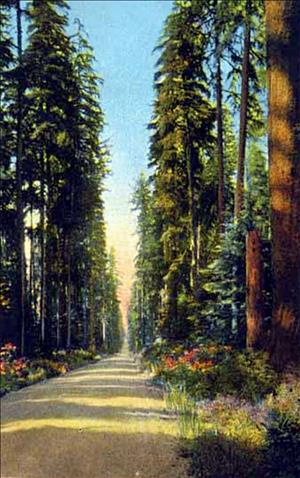On August 26 and 27, 1931, a public celebration marking the completion of the 330-mile-long Olympic Loop Highway (U.S. 101) is held in Kalaloch. The Olympic Loop Highway encircles the Olympic Peninsula, making this remote area of the state accessible to tourism for the first time.
Building the Olympic Loop Highway was a difficult undertaking. The soil of the Peninsula was unstable and covered with underbrush. The Loop started from the Pacific Highway at Olympia and passed through McCleary, Elma, Aberdeen, Port Angeles, Shelton, and many smaller towns, encircling the Olympic mountain range. The new road brought the Pacific coastline into ready accessibility for anyone with an automobile.
The final portion of the road to be completed was the area between the Hoh River and Kalaloch. Text printed on a map of the era explains, "Work is now underway to connect this route [the Olympic Highway] with the road to Lake Quinalt, making complete the loop around the Olympic Peninsula."
The Seattle Chamber of Commerce led a caravan of business people from Port Angeles to Kalaloch, "dedicating various bridges en route" (The Seattle Times). These bridges included the Bear Creek, Sol Duc, Ox Bow, and Nolan Creek.
Governor Roland Hartley, British Columbian Premier Simon F. Tolmie, lumber baron and former speaker of the State House of Representatives Mark Reed (1866-1933), Highway Department director Samuel Humes (1883-1941), and several thousand others attended the main dedication celebration. Members of five coastal tribes, the Quillayutes, Quinalts, Queets, Hoh, and Makah, held contests and performed traditional games and dances to mark the occasion.

